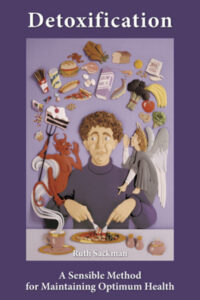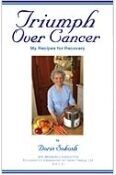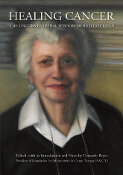What exactly is honey? Honey is primarily a carbohydrate. It is basically a sweetening or sugar. But what a marvelous sweetener it is!
Unlike white cane sugar, honey contains plenty of vitamins and minerals. One hundred grams of honey (five /evel tablespoons) supplies 55 mgs. of potassium, 6.5 mgs. of phosphorous, 5 mgs. .55 mgs. iron, 5.5 mgs. sodium, 3 mgs. magnesium, and small amounts of vitamin Bl, B2, B6, C, folie acid, niacin, pantothenic acid and copper. The caloric energy of honey is supplemented by these vitamins and minerals that are provided in perfect balance.
These vitamins and minerals plus the trace amounts of protein, enzymes and hormones also contained in honey total approximately 3% of the solids in honey. Honey is roughly 20% water.
The remaining 97% of the solids in honey are simple and complex sugars. This percentage can vary by one or two percent since the percentage of vitamins, minerals, etc., in honey can vary by that much.
Fructose and glucose account for nearly 75% of the simple sugars in honey; with glucose usually being predominate. In addition to simple sugars, there are also twelve complex sugars, such as maltose, in honey. However, these twelve complex sugars make up only 4% of the total sugar content.
Honey has a big advantage over other sugars in that it does not cause the blood sugar to rise to higher levels than can be readily handled by the body. Honey still provides immediate energy because of its glucose, but the fructose is absorbed more slowly, and the complex sugars are absorbed even slower to provide you with lasting energy.
Honey also has fewer calories than sugar. One hundred grams of honey contains 340 calories. The same amount of cane sugar has 385 calories.
“Honey which is left to crystallize without any control from the beekeeper, if absolutely clear of particles of any sort and air bubbles, will not crystallize rapidly, often for many years,” according to Ted Hooper in Guide To Bees and Honey.
Yet most natural honey, because it has been removed from the honeycomb, will crystallize.
The honey sold in supermarkets will resist crystallization because it has been heated and filtered. Prolonged heating destroys the enzymes in honey, and filtering removes some of the valuable nutrients.
It is best to buy honey clearly labeled “natural and unheated.” If it crystallizes, just put the container in a pan of water at about 110°F. until it returns to liquid.
In storing your honey, it is best to have it in airtight containers. Honey is hygroscopic, and if left open will draw moisture from the air. And if for some reason you transfer your honey from its original container, transfer it only to a glass container or honey can. Honey reacts with the iron in many metal containers and forms a black iron tannate which can spoil the honey.
Honey is also excellent to keep in your kitchen as a substitute for sugar.
The best honey to use as an exchange for sugar is a very light-colored honey such as clover honey. Light honeys have little taste other than their natural, delicious sweetness and will not change the taste of your recipe.
Darker honeys, however, add a hint of taste that can be a real plus to some recipes. They are richer in vitamins and minerals. The color of honey is determined by the source of which the nectar comes, although hot weather will sometimes affect the color.
The belief that sage gives honey a sage taste, or that orange blossom honey has an orange taste is a myth. They each have their own unique flavor but they do not take on the pronounced flavor of their source. It is wise to select a light-colored honey for general purpose use.
Here is some important data for use in exchanging sugar for honey in cooking: a cup of honey weighs 12 ounces. One fifth of this is water. This means there are approximately 9 1/2 ounces of honey sugar in each cup of honey; yet a cup of cane sugar weighs just seven ounces. So actually, cup for cup, honey contains more sweetening than white sugar. This means that to get the identical sweetness, you should use 3/4 cup of honey for each cup of sugar your recipe calls for.
And finally., because thern ‘are two ounces of water in 3/4 cup of honey, you should reduce the liquid in your recipe by 1/4 cup for every 3/4 cup of honey used.
Honey also has a place in your medicine cabinet as well as your pantry. As a folk remedy, honey dates back to at least 2,000 B.C.
Honey has been universally hailed as an ointment to heal wounds, sores and skin ulcers, and when mixed with vinegar, it makes a soothing cough syrup.
During wartime in ancient times honey was smeared on wounds as an antiseptic by Greeks, Romans, Egyptians, Assyrian and Chinese, as well as by the Germans in World War One.
From the earliest ages, honey has been employed as a medicine. “In 1970, “Jean Carper writes, “a prominent British surgeon surprised colleagues by announcing that he regularly used honey on open wounds after vulvectomies (gynecological cancer surgery). He found that the honey-covered wound healed faster and had less bacterial colonization than wounds treated with ordinary antibiotics.”
In 1973 another British doctor reported in a medical journal that honey, applied every two or three days under a dry dressing, promoted the healing of ulcers and severe burns.
Studies in South Africa reveal it is also good for relieving diarrhea caused by bacteria. Volunteers receiving honey-laced fluids recovered 40% faster than those who took fluids containing sugar.
Researchers have also discovered that when honey is metabolized in the body it helps trigger the release of a brain chemical called serotonin. This chemical is known to dull our perception of pain and also induce relaxation and sleep.
Reprinted from Natural Food & Farming .





